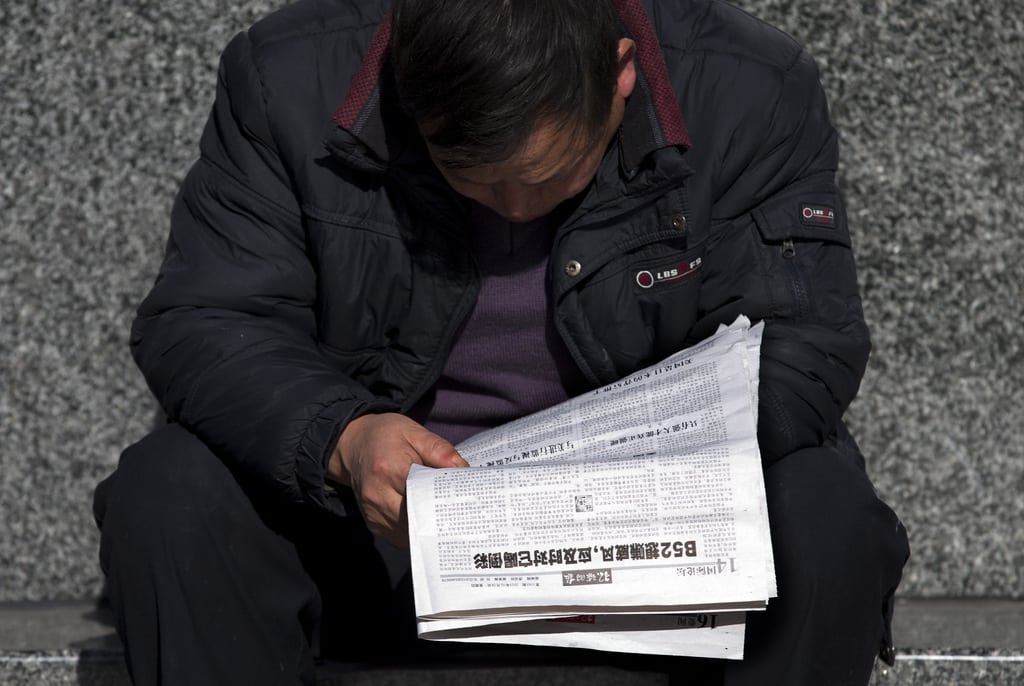Skift Take
There are so many ways for China to act tough in a real, material way that this latest antic comes off as posturing over nothing. Which it is.
The United States advised U.S. carriers to comply with China’s demand that it be told of any flights passing through its new maritime air defense zone over the East China Sea, an area where Beijing said it launched two fighter planes to investigate a dozen American and Japanese reconnaissance and military flights.
It was the first time since proclaiming the zone on Nov. 23 that China said it sent planes there on the same day as foreign military flights, although it said it merely identified the foreign planes and took no further action.
China announced last week that all aircraft entering the zone — a maritime area between China, Taiwan, South Korea and Japan — must notify Chinese authorities beforehand and that it would take unspecified defensive measures against those that don’t comply. Neighboring countries and the U.S. have said they will not honor the new zone — believed aimed at claiming disputed territory — and have said it unnecessarily raises tensions.
State Department spokeswoman Jen Psaki said in a statement Friday that the U.S. remained deeply concerned about China’s declared air identification zone. But she said that it is advising U.S. air carriers abroad to comply with notification requirements issued by China.
On Wednesday, Psaki had said the U.S. government was working to determine if the new rules applied to civil aviation. But she said that in the meantime, U.S. air carriers were being advised to take all steps they consider necessary to operate safely in the East China Sea region.
In Beijing, the Ministry of Defense said the Chinese fighter jets identified and monitored the two U.S. reconnaissance aircraft and a mix of 10 Japanese early warning, reconnaissance and fighter planes during their flights through the zone early Friday.
“China’s air force has faithfully carried out its mission and tasks, with China’s navy, since it was tasked with patrolling the East China Sea air defense identification zone. It monitored throughout the entire flights, made timely identification and ascertained the types,” ministry spokesman Col. Shen Jinke said in a statement on its website.
In Washington, a Pentagon spokesman, Army Col. Steve Warren, said when asked about China’s statement, “The U.S. will continue to partner with our allies and will operate in the area as normal.”
Japanese officials declined to confirm details of any flights, but said routine missions in the area were continuing.
“We are simply conducting our ordinary warning and surveillance activity like before. We have not encountered any abnormal instances so far, therefore we have not made any announcement,” Japanese Defense Minister Itsunori Onodera told reporters in Tokyo.
The United States and other countries have warned that the new zone could boost chances for miscalculations, accidents and conflicts, though analysts believe Beijing’s move is not intended to spark any aerial confrontations but rather is a long-term strategy to solidify claims to disputed territory by simply marking the area as its own.
June Teufel Dreyer, who specializes in security issues at the University of Miami, said the Chinese government — while backing down from strictly enforcing the zone to keep a lid on tensions — is walking a delicate line because it is faced with strong public opinion from nationalists at home. Sending up the fighter planes Friday was aimed at the domestic audience, and China is likely to send planes regularly when foreign aircraft enter the zone without notifying Chinese authorities, she said.
“They will be ‘escorting’ the intruding planes, but they are not going to shoot them,” she said.
The zone is seen primarily as China’s latest bid to bolster its claim over a string of uninhabited Japanese-controlled islands in the East China Sea known as Senkaku in Japan and Diaoyu in China. Beijing has been ratcheting up its sovereignty claims since Tokyo’s nationalization of the islands last year. However, there are questions whether China has the technical ability to fully enforce the zone due to a shortage of early warning radar aircraft and in-flight refueling capability.
The United States, Japan and South Korea all have said they sent military flights into the zone over the past week without notifying China. Japanese commercial flights have continued unhindered — although China has said its zone is not intended to have any effect on commercial flights not heading to China.
Dreyer said the U.S. and Japan have kept sending planes into the zone to make good on the message that they are ignoring it. “They have to do it more than once to show they are serious,” she said.
Dreyer said the Chinese government may have miscalculated the strength of the international response to the establishment of the zone, but that China will hold its line in the long run.
“The Chinese government is not going to concede the substance,” she said. “When circumstances are more conducive, they will try to enforce it more strictly in the future. This is a pattern we have noticed for decades.”
![]()
The Daily Newsletter
Our daily coverage of the global travel industry. Written by editors and analysts from across Skift’s brands.
Have a confidential tip for Skift? Get in touch
Photo credit: A Chinese man reads a newspaper which reports that U.S., Japan and South Korea sent flights through China's newly declared maritime air defense zone, in Beijing, China Friday, Nov. 29, 2013. China said it sent warplanes into the air defense zone days after the U.S., South Korea and Japan all sent flights through the airspace in defiance of rules Beijing says it has imposed in the East China Sea. Andy Wong / Associated Press
